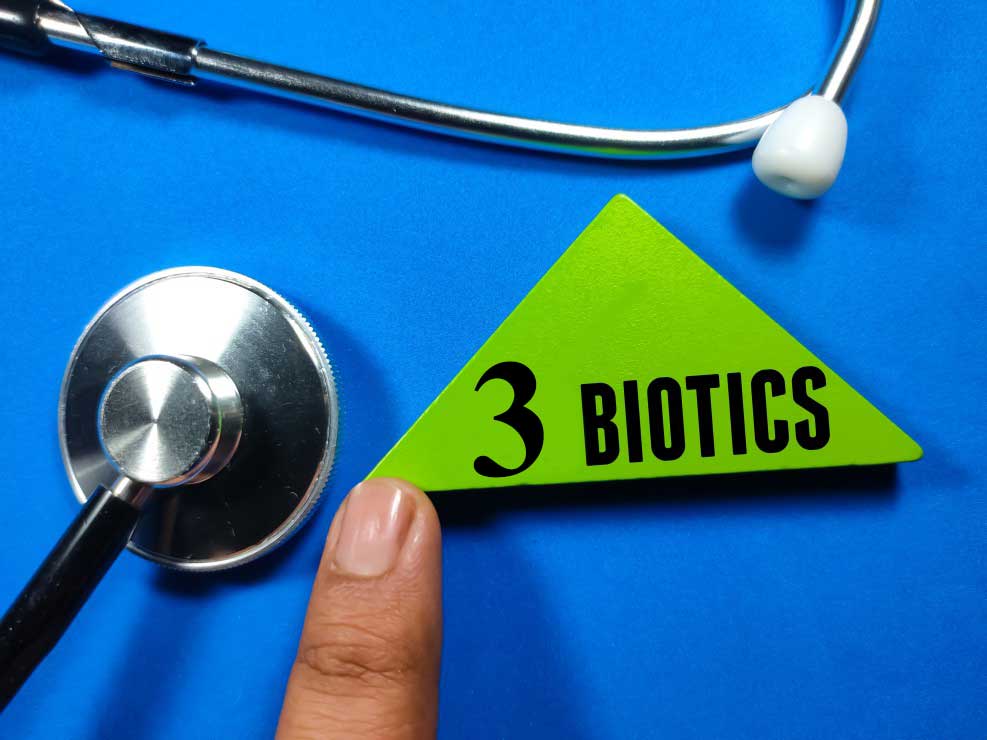Probiotics and prebiotics and postbiotics, oh my!
What a difference a decade makes.
Fifteen or so years ago — long before functional and preventive medicine became the everyday buzzwords we hear today — one of my rectal cancer patients brought up the idea of using probiotics after he had lifesaving traditional treatments.
After 25 years as a traditionally trained, acute-care medical doctor, I look back in awe at that query by my patient. He was grateful his cancer had been cured with radiation chemotherapy and surgery, but his quality of life had changed. It wasn’t so commonplace then to think that probiotics, those live micro-organisms that help improve gut function, would play such an important role in overall health. At the time, I suggested to my patient that he could try probiotics, but I doubted he’d see much response.
Look how far the real experiences of patients and research have come today.
More than ever, we’re realizing the profound impact of maintaining and feeding those bacteria and other micro-organisms to keep them healthy and functioning. In my practice, I commonly recommend probiotics to patients after certain treatments, a move that is yielding great results.
In an earlier learning center post, I wrote extensively about gut health’s crucial role in functional medicine.
Now, here’s what you need to know about the three “biotics” — that is, relating to or caused by living elements:
Probiotics
Probiotics have been used, discussed and researched the longest of the three.
Probiotics are bacterial species we ingest in our diets and through our exposure. Even before we’re brought into the world, one of the most important exposures for the microbiome happens. The natural passage through the vaginal canal colonizes the gut with numerous bacteria; in a C-section, the surgical procedure is performed in at least a semi-sterile method, and therefore the infant’s gut is not colonized. As a result, in adulthood, type of birth is a known risk factor for any imbalance in the gut microbiome. But the microbiome CAN change throughout our lives — through the food we eat or by taking probiotic supplements to maintain the colonization of the gastrointestinal (G.I.) tract. Many different species of bacteria live in the gut, and this can vary from person to person, but they also have a lot in common. Some of the most important species are Lactobacillus and Bifidobacteria, and both can be taken as supplements or by eating fermented foods.
Prebiotics
Prebiotics are essentially the soluble fiber in our diet that’s the food source for gut bacteria. Humans cannot digest fiber — the bacteria act to digest or ferment the fiber that feeds the bacteria. These digestive products become the preferred source of fuel for colonic cells. Prebiotics can be eaten or taken in supplement form. The two types of fiber that we ingest are soluble (easily dissolved in liquid like water) and insoluble (hard to dissolve in liquid). It’s the soluble fiber that’s the prebiotic necessary for the bacteria.
Postbiotics
This is the baby of “biotics” — well, not in how long it’s been around or how important it is, but in how well known it is. Postbiotics are the byproducts (waste products) of bacterial digestion, carried out by probiotics in the intestine. More research suggests postbiotics have an equally, if not more, important role in maintaining and improving health. While at first you may think waste products aren’t of much use to us, they actually can have health-boosting functions in our gut! Some of these fermentation products are short-chain fatty acids (SCFAs, which might influence communication between the gut and the brain, and brain function). Other byproducts of bacterial fermentation include various amino acids (building blocks of proteins), antimicrobial peptides (which aid in immunity), and both B and K vitamins.
Here’s more of a breakdown on the postbiotic front:
SCFAs:
Butyrate = butyric acid Acetate = acetic acid propionate = propionic acid
And here are some gut-healthy foods you can sink your teeth into:
Probiotic Foods: Dairy:
Acidophilus milk
Buttermilk
Aged cheese
Cottage cheese
Kefir
Sour cream
Yogurt (plain, no added sugar, active cultures)
Non-dairy:
Fermented meats
Fermented vegetables
Kimchi
Kombucha
Kvass
Miso
Natto
Pickled vegetables (raw)
Sauerkraut Tempeh
Prebiotic Foods
Apple
Asparagus
Banana
Burdock
Chicory
Cocoa
Dandelion greens
Eggplant
Endive
Flaxseed
Garlic
Honey
Jerusalem artichoke
Jicama
Konjac
Leek
Legumes
Onion
Peas
Radicchio
Whole grains
Yacon

